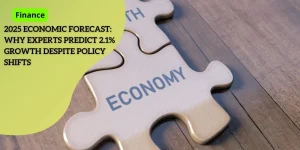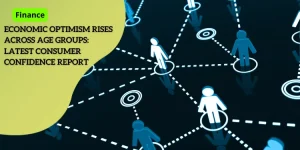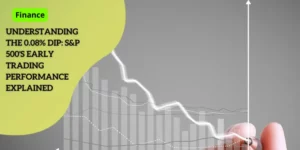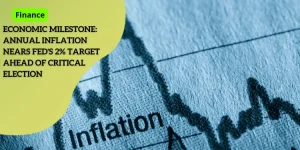Consumer Confidence Hits 12-Year Low: What This Recession Signal Means for Your Finances
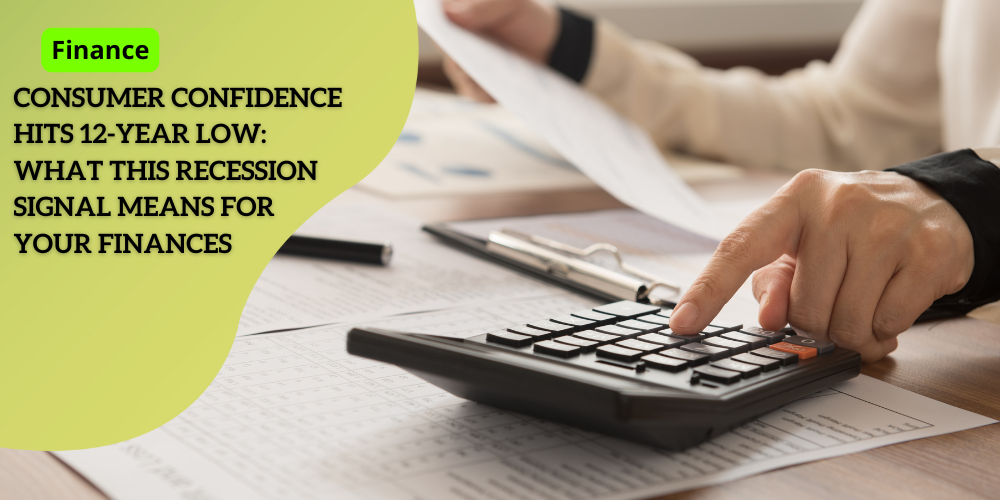
Anúncios
 Understanding the Consumer Confidence Plunge
Understanding the Consumer Confidence Plunge
Consumer confidence has taken a nosedive, marking its fourth consecutive month of decline.
According to The Conference Board’s recent report, the consumer confidence index dropped by 9.6 points, reaching just 65.2.
Anúncios
This is the lowest level recorded since 2013, raising alarms as such a decrease historically signals an impending recession.
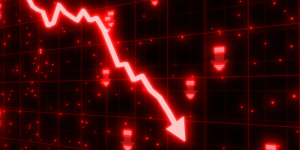
Anúncios
 The Significance of the Expectations Index
The Significance of the Expectations Index
The Expectations Index, which measures consumers’ short-term outlook for income, business, and labor market conditions, also took a significant hit.
It fell below the critical threshold of 80, which has historically indicated negative growth ahead for the economy.
The latest figure points to deepening pessimism among consumers, echoing the low levels seen during past economic turmoil 
The drop in consumer confidence isn’t just a number; it reflects widespread apprehension about the economic future 
The backbone of this decline includes concerns about financial stability, eroding business conditions, and wavering employment prospects.
 Four Months of Consistent Decline
Four Months of Consistent Decline
The steady decline of consumer confidence over the last four months is unprecedented.
This consistent drop underscores a significant shift in public sentiment.
As consumers grow more pessimistic about the future, their spending habits are likely to change, which could have broader implications for the economy.
External factors like stock market volatility, rising inflation expectations 

More specifically, the stock market’s recent downturn and the S&P 500 index’s dip were major factors driving the current consumer sentiment into the ground. The combined effect exaggerates the negative outlook for the economy, deepening the concerns of recessionary trends.
 A Spotlight on Economic Indicators
A Spotlight on Economic Indicators
Despite the gloom surrounding consumer confidence, contradicting economic indicators are also in play.
The White House points to positive economic signs such as retained low layoff rates and consistent retail sales as reasons to stay optimistic.
For instance, Stephen Miran, Chair of the White House’s Council of Economic Advisers, recently noted the stable housing demand and dismissed the negative consumer confidence data as largely influenced by political divides.
While the public sentiment captured in surveys hints at possible economic turmoil, these contrasting indicators suggest a more nuanced economic landscape.
The overall impact of these differing viewpoints on consumer behavior and economic health warrants careful monitoring moving forward 
With the groundwork laid out regarding the current plunge in consumer confidence, further discussion around key factors driving this decline becomes essential to understanding the multifaceted economic environment we are navigating.
 Key Factors Driving the Decline
Key Factors Driving the Decline
| Factor | Impact |
|---|---|
 Stock Market Volatility Stock Market Volatility |
Recent declines, including a 10% drop in the S&P 500, have shaken financial confidence and increased economic uncertainty. |
 Financial Instability Financial Instability |
Uncertainty in investments and retirement funds causes consumers to be more cautious with their spending. |
 Rising Inflation Expectations Rising Inflation Expectations |
Inflation expectations have hit their highest level since May 2023, raising concerns about increasing costs of living. |
 Trade Policies & Tariffs Trade Policies & Tariffs |
Uncertainty surrounding trade policies and tariffs, including supply chain disruptions, has fueled economic pessimism. |

Inflation expectations have skyrocketed, reaching their highest levels since May 2023.
This persistent concern about inflation not cooling down has left a significant mark on consumer sentiment 
The Conference Board pointed out that the median year-ahead inflation expectations climbed for the fourth-straight month.
Consumers are consistently vocal about their inflation worries, reflecting broader fears that price hikes will continue to burden household budgets.
This worry about rising costs in the near future adds to the general economic anxiety and undermines consumer confidence 

Concerns over trade policies and tariffs are also adding to consumer uncertainty. Measures like President Donald Trump’s tariff strategies and efforts to downsize federal agencies have made significant headlines, fueling anxiety about their long-term economic impacts 
According to the Conference Board, these trade policy worries are on the rise, adding yet another layer of apprehension among consumers.
Trade disputes and tariffs can potentially disrupt supply chains and increase the cost of goods, which directly affects consumer wallets and confidence 
Consumer confidence is intricately linked with the broader economic and political context, and these key factors—market volatility, inflation worries, and trade policies—have clearly contributed to the downward trend .
As we dive deeper into the demographic disparities in consumer sentiment, we’ll further examine which groups are feeling more jittery and why .
 Demographic Disparities in Consumer Sentiment
Demographic Disparities in Consumer Sentiment

Amidst the current economic turbulence, it is clear that different generations are experiencing the downturn in consumer confidence quite unevenly.
Older consumers, particularly those over 55, exhibit the most pronounced decline in confidence, deeply concerned about their financial stability and future economic conditions.
With their proximity to or reliance on fixed incomes and retirement savings, older individuals are particularly vulnerable to fluctuations 

These economic factors compound their existing anxieties around business and labor market conditions, leading to a significantly more pessimistic outlook compared to other age groups.
Young consumers, however, appear less fazed by the prevailing economic jitters.
Under-35-year-olds are managing to maintain a relatively positive outlook 
This optimism can be attributed to several factors, including their greater adaptability and less reliance on fixed financial resources.
Additionally, their confidence in the present economic situation has buoyed slightly, offering a stark contrast to the bleak apprehensions of older demographics.
 Financial Stability Among High Earners
Financial Stability Among High Earners
Interestingly, household income levels further differentiate consumer sentiment.
Those earning $125,000 or more annually have shown remarkable resilience amidst the prevailing economic downturn.
This stability could be due to a combination of financial security, diversified income sources, and perhaps a buffer against immediate inflation effects 
High-income households may have greater access to discretionary spending, savings, and investments, dampening the direct impact of broader economic shifts and enabling them to maintain a steadier confidence level.
 Implications and Widening Gaps
Implications and Widening Gaps
These demographic disparities reveal widening gaps in how different groups perceive and react to economic signals.
While younger consumers and high-income households seem to buffer against pessimistic forecasts, older generations are left grappling with deeper concerns 
This division highlights the importance of targeted economic policies and support systems that tackle the specific challenges faced by vulnerable groups. It underscores the need for inclusive strategies to foster economic stability across all demographics.
As we navigate these complex times of economic uncertainty, understanding these varying sentiments provides a portal into broader socio-economic dynamics 
It also sets the stage for exploring how political affiliations further color these perceptions, influencing consumer confidence in nuanced ways.
 Political Divide in Economic Outlook
Political Divide in Economic Outlook
The current economic outlook varies significantly across the political spectrum, with Democrats and Republicans expressing starkly different views on the nation’s financial health.
This disparity reflects deep-seated political cleavages that shape perceptions of economic conditions more than objective indicators do.
 Democratic Expectations at Record Lows
Democratic Expectations at Record Lows
Among Democrats, sentiments about the economy have plummeted to unprecedented levels.
The University of Michigan’s recent survey reveals that Democratic respondents now hold their lowest record of economic expectations ever 
This grim outlook can be linked to concerns over policy decisions and the perceived handling of economic challenges by the current administration.
Democrats feel increasingly pessimistic about future business conditions, employment opportunities, and their personal financial situations.
Such sentiments could undermine broader consumer confidence and spending, critical drivers of economic growth 
 Republican Optimism Amidst Uncertainty
Republican Optimism Amidst Uncertainty
On the other hand, Republicans maintain a considerably more favorable outlook. The current conditions rating among Republicans is at its highest since August 2023.
This positivity may stem from their confidence in the administration’s economic policies and expectations of favorable business dynamics 
Republicans are more likely to view the economy as stable and resilient, despite potential signs of downturn.
Their optimism bolsters consumer confidence in certain sectors, promoting spending and investment behaviors that sustain economic momentum 
 Political Cleavages Influencing Survey Responses
Political Cleavages Influencing Survey Responses
The stark contrast in economic outlook between Democrats and Republicans underscores how political biases significantly influence survey responses.
As Stephen Miran, Chair of the White House’s Council of Economic Advisers, noted in a recent CNBC appearance, these political divisions often skew consumer confidence data.
According to Miran, despite declining confidence figures, actual consumer behavior remains robust, with low layoffs, steady retail sales, and stable housing demand 
This disparity suggests that individuals’ economic perceptions are heavily tainted by their political affiliations, often diverging from measurable economic indicators.
While there is widespread acknowledgment of economic uncertainties, the data reveals interesting contrasts.
For example, certain parts of the economy show remarkable resilience, hinting at a complex interplay between sentiment and actual economic activity.
These contrasting views and behaviors reflect deeper divides and suggest that overarching economic policies may need to account for the diverse perspectives across the political landscape.
As we delve into the broader economic indicators, it becomes increasingly important to weigh these political influences and their implications for our economic future.
 Contrasting Economic Indicators
Contrasting Economic Indicators

Despite the drop in consumer confidence to its lowest level in 12 years, there are some bright spots in the economic landscape .
The White House has pointed to several positive indicators that seem to contradict the gloomy outlook suggested by consumer confidence data.
For instance, layoffs remain low—a promising sign that the labor market is holding steady in the face of economic uncertainty.
Additionally, retail sales have shown resilience, indicating that consumers are still willing to spend, despite their concerns about the economy.
 Retail Spending and Consumer Behavior
Retail Spending and Consumer Behavior
What is most fascinating is the apparent disconnect between consumer confidence and actual spending patterns.
While surveys indicate a pessimistic outlook, this does not appear to have significantly dampened consumer behavior, at least not in every sector.
People continue to shop, leveraging the strong job market and steady income flow, contradicting the dire signal of a recession that consumer confidence indices might suggest.
 Housing Demand Stability
Housing Demand Stability
The housing market also remains robust, with demand staying relatively stable.
This is crucial because a strong housing market can buoy other economic sectors and reassure consumers.
Housing is often a reflection of economic confidence, as buying or renting a home typically involves long-term financial commitments.
This stability in housing demand serves as a counterbalance to the declining consumer confidence and suggests underlying strength in the economy that might shield it from immediate severe downturns.
These contrasting indicators paint a complex picture.
The mix of declining confidence but stable performance in certain economic fronts poses intriguing questions about the true trajectory of the economy 
As we aim to get a clearer understanding of where things might be heading, these seemingly contradictory signals will continue to unfold and shape the broader economic narrative.


